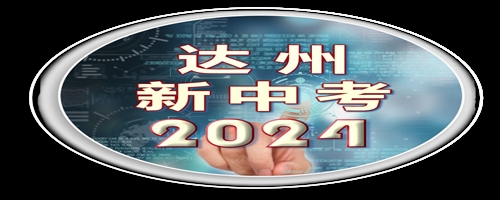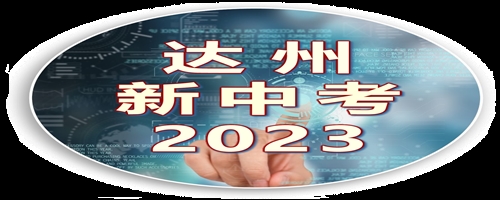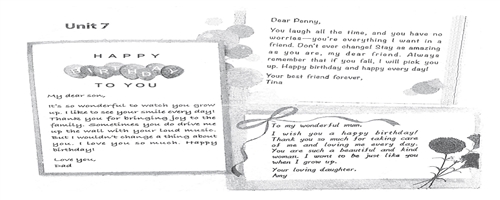Traditional Hairstyles
传统发型
From the end of the reign of Emperor Guangxu till the beginning of Republic of China(1908一1912),the popular bun types of Chinese women included Luoji(spiral bun),Baoji(pack bun),Lianhuanji(interlinking bun),Chaotianji(skyward bun),Yuanbaoji(Yuanbao-shaped bun;Yuanbao is a shoe-shaped gold or silver ingot),Baoyuji(abalone-shaped bun),Xiangguaji(muskmelon-shaped bun),Kongxinji(hollow bun),Panbianji(bun formed by rounding the tail),Mianbaoji(bread-shaped bun),Yiziji(line-shaped bun),Dongyangji(Japanese bun) Zhuimaji(bun like a person falling off a horse),Wufengji(dancing-phoenix bun ) and Hudieji(butterfly bun ),etc.
从光绪末年到民国初年(1908一1912 ),中国妇女中所流行的发型种类包括螺髻、包髻、连环髻、朝天髻、元宝髻(元宝是一种外形像鞋子一样的金锭或银锭)、鲍鱼髻、香瓜髻、空心髻、盘鞭髻、面包髻、一字髻、东洋髻、坠马髻、舞凤髻、蝴蝶髻等。
As for a young woman,in addition to the bun,there was also o lock of hair covering the forehead,commonly called Qianliuhai(front bang).The fashion of the Qianliuhai varies greatly,too the line-shaped,the hanging-silk-shaped andthe swallowtail-shaped,etc
对于年轻妇女来说,除了发髻之外还要将一络头发盖在额头上,这通常被称为前刘海。前刘海的式样也是千差万别的,有一字式、垂丝式、燕尾式等等。
Around the 12th year of Republic of China(1923),Jianfa(a hairstyle formedby cutting the hair neatly) became popular. In the 1930s,perm was widely spread to China. After 1933,Chinese women in big cities usually followed the Western style,and some even dyed their hair into different colors such as red,yellow, brown,etc.,which were regarded as fashionable.
在民国十二年(1923)之前,剪发(通过将头发剪整齐来打造出发型)十分流行。到了上世纪30年代,烫发在中国广为盛行。1933年之后,大城市里的中国妇女通常追求西式发型,有些人甚至将头发染成不同的颜色,例如红色、黄色、褐色等,人们认为这十分时髦。
Embroidered Shoes:Making a Comeback
绣花鞋:回归往昔
In the shoe family,Chinese-style embroidered shoes,which have been deemed as a perfect combination of the shoe culture and the art of embroidery, are a 100-percent handicraft creation by Chinese people. Deeply rooted in Chinese culture, they are reputed as“Chinese shoes",
在鞋类大家族中,中式绣花鞋被认为是鞋文化与刺绣艺术的完美结合,它是中国人百分之百手工制作而成的。中式绣花鞋在中国文化中根深蒂固,被誉为“国鞋”。
In ancient China,ever since the matrilineal society was replaced by a patrilineal one,the social division of labor has been based on men ploughing and women weaving; the tradition of embroidering shoes has been passed down from one generation to another by Chinese women. Aesthetic conceptions,cultural traditions,ethics and morals,as well as the fashion of different dynasties, have allows'been well expressed by the needle and thread with which subtle and interestingchanges have been incorporated.
在古代中国,自从母系氏社会被父系式社会所取代之后,社会劳动分工便建立在男耕女织的基础之上;而绣花鞋这一传统则由中国妇女一代代流传下来。它通过针与线创造出了美学概念、文化传统、伦理与道德以及不同朝代的时尚,同时也加入了微妙、有趣的变化。
But when and where did embroidered shoes first appear? Works that have been passed down from ancient times fail to provide us with explicit evidence. The popular tale of the "Jin Shoes" may,however, give us some inspiration.
但若要说起绣花鞋起源的时间和地点的话,古代流传下来的书籍并不能为我们提供明确的证据。但是“晋鞋”这个广为流传的故事可能会给我们一定的启示。
In the Spring and Autumn and Warring States periods dating back more than 2 600 years,the capital of the State of Jin was located in Shanxi Province. In 606 BC when Jin Xiangong became the monarch,he set out to expand the territory, annexing l0 vassal states. To immortalize his cultural and military achievements in the minds of the masses, Jin ordered that the shoes belonging to all women in the palace should bear 10 fruit or flower patterns,including pomegranate blossoms, peach blossoms,grapes,etc. He also mandated that all civilian girls should wear the“10-fruit shoes" at their weddings so that the generations to follow would not forget his legacy. At that time,the female embroidered shoes bearing such patterns were called "Jin shoes".From then on,the art of embroidery extended from shoes to clothing and other daily utilities.
在距今2 600多年前的春秋战国时代,晋国的首都位于山西省。当晋献公在公元前606年当上国君之后,他大举开辟疆土并且吞并了10个诸侯国。为了让人民大众记住自己的文治武功,晋献公命令将宫中所有女子的鞋子都必须描绘出10种水果或花卉的图案,这其中包括石榴花、桃花、葡萄等。他还要求所有的平民女子在出嫁的时候都必须穿这种“绣着10种水果图案鞋”,这样今后世世代代的人们就不会忘记他所留下的功绩了。当时,妇女所穿的这种带有上述图案的绣花鞋便被称作“晋鞋”。自此之后,刺绣艺术便从鞋子扩展到衣物和其他日常用品上。
Three hundred years later, the great philosopher Xuntse was born in“the hometown of embroidered shoes".Xun attached much importance to the local embroidery trade. In his famous book Xun Zi,he recorded the emerging popularity of the iron needle in embroidery,glorifying the embroidering needle from the viewpoint of a philosopher. He noted that apart from embroidery the needle can also promote the economic development and stability of a society. Even in neoteric times,local silk fabrics and embroidery were still well reputed both home and abroad. The local women began embroidering at an early age,spending over 10 years on their embroidered matrimonial shoes. They did this to demonstrate their loyalty to love and their aspiration for happiness. Social reforms also rendered the craft of embroidery as an important standard for appraising a girl as“clever and deft".
300年之后,伟大的哲学家荀子出生在“绣花鞋之乡”。荀子认为当地的刺绣贸易十分重要。在他所撰写的名作《荀子》一书中,他记载了铁针在刺绣业中的受欢迎程度越来越高,并且从哲学家的角度对用于刺绣的针大加赞美。他指出除了刺绣之外,针还可以用来促进经济发展和社会的稳定。即便是到了近代,当地的丝绸织物和刺绣依然享誉海内外。当地的妇女从很小便开始从事刺绣行当,并且要花十多年的时间来制作自己出嫁时的绣花鞋。她们之所以这样做是为了表明自己对爱情的忠诚以及对幸福的热望。社会变革也使束华秀这门技艺成为评判女子是否“心灵手巧”的一条重要标准。
Colorful silky threads are used to embroider elaborate patterns on the shoe from heel to toe,and from the sole to the shoe padding.
人们使用五颜六色的丝线,在鞋子上从脚趾到脚踵、从后跟到鞋垫的部位上都绣上了精美的图案。
The themes for shoe embroidery originate from daily life-such as folk culture and folk customs-and nature, including flowers and grass, birds and beasts, and theatrical figures
鞋子上的刺绣主题来源于日常生活—例如民间文化和民间传统—以及自然界,这其中包括花草、鸟兽以及戏剧人物。
The seemingly traditional embroidered shoes fall into different types:trendy ,indoor and traditional. The most attractive aspect of embroidered shoes is their soft texture and comfort. The perfect combination of fashion and tradition produce a truly unique product.
外观上传统的绣花鞋可以分为不同的种类:时尚型、室内型以及传统型。绣花鞋最具有吸引力的地方在于它们的质地很软并且很舒适。时尚与传统的完美结合打造出一款真正独特的产品。
Many young people believe embroidered shoes add a touch of elegance to the modern woman without looking too conservative. And more than 20 ethnic groups still wear embroidered shoes as part of their characteristic dress. Embroidered shoes have become more than footwear these days-they are one of the nation's cultural treasures.
许多年轻人认为绣花鞋给现代女性带来了一分高雅感,而且也不会使人看上去过于保守。20多个民族也将绣花鞋作为自己的特色服饰穿着。绣花鞋如今已经不仅仅是鞋类产品了,它还是国家的文化财富之一。
All about Wedding Shoes
关于婚礼鞋
In the Maizhou Region of East China's Jiangsu Province,wedding shoes are known as xi xie or“happy shoes".Before liberation(in 1949),when a girl was getting married,she usually wore a pair of happy shoes,which were made of red cloth or silk and were sometimes embroidered with flower patterns in the front part. With the increasing use of leather shoes after liberation,the bridal wedding shoes gave way to the leather ones. The bridegroom's first pair of shoes after marriage should be made or bought by the bride.
在位于华东江苏省的海州区,婚礼鞋也被叫做喜鞋。在解放(1949年)前,女在出嫁之前通常要穿一双喜鞋;喜鞋是用红色的布或丝制成的,而且有时在前面绣上了花卉图案。在解放以后随着人们越来越多地使用皮鞋,婚礼鞋便让位于皮鞋了。新郎在结婚后所穿的第一双鞋应当由新娘制作或购买。
In Longquan,Zhejiang Province,there are many customs on the bride and bridegroom's wedding shoes. For example:the bride usually wears pink or orange wedding shoes,which are made by a girl whose parents are still alive or a grandma who has witnessed three generations. The front uppers are embroidered with a pair of phoenixes picking peony flowers. Inside the shoes is a lining of white cloth, on which is embroidered a pair of the Chinese character“喜”meaning happiness.
在龙泉地区,当地有许多关于新娘和新郎的婚礼鞋的规定。例如:新娘通常要穿粉红或橙色的婚礼鞋,而且制作鞋子的女孩父母健在或是她的祖母见到了三代子女。鞋子的前上方绣有一对衔着牡丹花的凤凰。在鞋子里面是一层白布衬里,上面绣着一对汉字“喜”,表示幸福之意。
On the wedding day,the bride wears this pair of shoes to get on and off the sedan chair, as well as for the following three days. After that,the shoes will be put away. When the first child she gives birth to reaches one month old,she wears this pair of shoes to meet guests to show that she is a first-time mother. The bride-groom's shoes,on the other hand,are made with black cloth by the same kind of people who make the wedding shoes for the bride,and can be wom until they are worn out.
到了结婚当天,新娘便穿着这双鞋子上下轿子,之后的三天也要穿着这双鞋。之后便将这双鞋收起来。当她哺育的第一个孩子长到一个月大时她便穿着这双鞋去见客人,这样就表示自己是第一次当母亲二而新郎的鞋则由为新娘做鞋子的人用黑布做成,然后一直要穿到破了为止。
Wedding shoes have different names in different places. In ancient times, wedding shoes were also called "Zodiac Shoes",since a propitious date was chosen for the wedding ceremony. When getting on the sedan chair,the bride always wore a pair of yellow shoes,which were changed to red ones upon her arrival at the bridegroom's family.
不同地方对婚礼鞋的称呼各有不同。在古代,婚礼鞋又被称作“黄道鞋”,因为结婚典礼要选择在黄道吉日举行。当新娘坐上轿子时总是穿一双黄色的鞋,然后待到了夫家之后再换成红色的婚鞋。
In some places,wedding shoes refer to shoes worn by the bride while making bows to the bridegroom's parents at the traditional wedding ceremony, and area therefore named cai tang xie or“stepping hall shoes".In other places,wedding shoes refer to those worn by the bride when changing her hairstyle on the wedding day,featuring a thin sole,red lining,and embroidered flower patterns. After that, the bride has to change to another pair of shoes, and throw the wedding shoes under the bed to show her determination of not marrying again. Some people hold the view that the earlier cai tang xie is rotten,the earlier the bride will give birth to child.
在某些地方,婚礼鞋就是指新娘在传统结婚典礼上向新郎父母拜堂时所穿的鞋,因此它又称作踩堂鞋。在另一些地方,婚礼鞋则指的是新娘在结婚当天上头时所穿的鞋,它的特点是薄底、红帮并且绣有花卉图案。上头完了之后,新娘就要换上另一双鞋,然后将婚礼鞋扔到床下,以此来表示自己永不再嫁的决心。有些人认为踩堂鞋烂得越早,新娘生孩子越早。
In the old days,the bride often wore a pair of soft-sole shoes when spending the night in the nuptial chamber softened by candlelight. When in bed,the bridegroom would take off the shoes for the bride, and then look at the drawings inside the shoes together.
在过去,新娘在洞房花烛夜时经常要穿一双软底鞋。在上床时新郎要为新娘脱下鞋子,然后再同新娘一同观看里面的图画。
There is another kind of wedding shoes called hui men shoes. A month after marriage,the brides' family usually invites the bride to live with them for several days,which is known as men. The bride can live there for a month if accompanied by the bridegroom. Otherwise,she can only live as long as her mother-in-taw allows,usually eight or eighteen days. During her stay at her parents' home,the bride has to make each member of the bridegroom's family a pair of shoes,which are the so called hui men shoes.
还有一种婚礼鞋被称作回门鞋。在结婚后一个月,新娘的家人通常邀请新娘与其同住几天,这就是回门。如果新郎陪同前去的话,新娘可以在娘家住上一个月。否则在娘家住的天数就要由婆婆决定,通常是8天或18天。新娘在回门期间要为新郎的每位家人做一双鞋,这就是所谓的回门鞋。
Customs Associated with Shoes
与鞋有关的习俗
In China,there are many established practices concerning shoes, many of which have become standard life etiquette. For example,shoes are presented to a baby one month after its birth;newlyweds have to wear wedding shoes at their wedding ceremony; shoes embroidered with the Chinese character "fu" are often given as birthday presents to elderly people; and at funerals,the children of the deceased have to wear filial shoes. Among the various shoe-related customs, wedding shoes have played an extremely important role in one's marriage since ancient times.
在中国已有许多与鞋子有关的风俗,其中许多已成为标准的生活礼仪。例如,婴儿满月时要送给他鞋子;新婚夫妻在婚礼上要穿婚礼鞋;上面绣有汉字“福”的鞋子经常当作生日礼物送给老人;在葬礼时,去世者的孩子要穿孝鞋。在各种与鞋有关的习俗中,婚礼鞋自古以来就在婚礼中发挥着极为重要的作用。
During the Southern Dynasty(420一589),if a man was to take a wife,he had to first present to the woman a new pair of silk shoes when delivering betrothal gifts. The custom continued in many places,such as in Ynxian of today's Zhejiang Province in East China,during the reign of Emperor Guangxu in the Qing Dynasty. According to the local matrimonial customs at that time, when a marriage was settied,the woman's family would find out the shoe sizes of the man's grandparents and great-grand parents. Then,the woman would painstakingly make elaborate shoes for them. When delivering betrothal gifts,the man would give jewelry, silk,cattle,food,and wine to the woman's family,who would hold a feast to entertain. Afterwards,the woman's family would give the man the self-made shoes in return,which were meant to show their daughter's filial piety to her future in-laws.
在南北朝(420一589)时,男子如果要娶媳妇的话,那么在送聘礼时必须首先送她一双新的丝鞋。这个习俗在许多地方延续到光绪年间,例如今天华东的浙江省郸县。根据当时当地的成亲习俗,当定下一门亲事时,女方的家人要了解男方祖父和曾祖父的鞋子尺码。然后女方就会尽心地为他们做鞋子。男方在下聘礼的时候要给女方家人首饰、绸缎、牲口、食物以及酒,而女方家人要办婚宴来招待。之后女方的家人就要将女方亲手做的鞋回赠男方,这意味着他们的女儿要孝顺她公婆。
Shoes to Show the Bride's Needlework
用鞋子来展示新娘的女红水平
The shoes made by the bride,though not necessarily for herself, are a must among the bride's dowry in many places. In the Shangluo Region of Shanxi Province in north Chino,every woman,prior to her marriage, has to make a pair of shoes for every member of her fiance's family.
虽说新娘并不一定要为自己做鞋,但是在许多地方陪嫁中必须有新娘做的鞋。在华北陕西省的商洛地区,每个女子在结婚之前都要为其未婚夫的每一位家人做一双鞋。
On the wedding day,after the wedding ceremony,the bride has to distribute the shoes she has made to every family member, who will try on the shoes on the spot and make some comments. The shoes,in addition to showing the bride's needlework, also signify that the bride will respect the elder,love the young,and get along well with the whole family.
在成亲那天,新娘在婚礼仪式结束之后要将她做的鞋发给每位家人,以便他们现场试穿并给一些评价。鞋子除了展示新娘的女红水平之外,还表示新娘要尊老爱幼并与全家人相处融洽。
The“Sifting Shoes" Custom
“筛鞋”风俗
There is an interesting custom called“sifting shoes" among the zhuang people. When hnro young people get married,the bride's sisters escort her to the bridegroom's family.Then a wedding ceremony is held,in which the bride and bridegroom make formal bows to the groom's parents. After that, the escorts sing songs together before the bridegroom's family to lay out the wedding banquet,during which the ritual of tea or wine serving is held. As the escorts are beginning to take leave,a young man brings out a sift and begins“sifting shoes".
在如今的壮族中有个有趣的习俗叫“筛鞋”〔,当两个人结婚时,新娘的姐妹要把她送到新郎的家中。然后举行结婚典礼,新娘和新郎要向新郎的父母正式鞠躬。之后,送亲的姐妹要在新郎的家人面前一起唱歌来摆开婚宴,并在此期间举行敬茶或敬酒仪式。当送亲的人正准备离开时,一位年轻男子就会捧出一个筛子开始“筛鞋子”
Usually,the escorts will decline politely before putting the shoes they bring with themselves into the sift. Every time the man receives a pair of shoes,he will put a red packet into the container and then presents it to the escort as he shakes the container and sings songs of gratitude. He does this until he has“sifted”shoes into red packets for all the escorts.
送亲的人通常要先礼貌地推辞,然后将她们带来的鞋子放进筛子。每当这位男子接过一双鞋子的时候,他就会在筛子里放一个红包,接着边摇动筛子的时候边将红包交给送亲的人,嘴里还唱着答谢的歌。他要为所有送亲人员将鞋子“筛”成红包。
Evolution of Caps in China
中国帽子的变迁
Cap was invented long ago in China. For example,in Chinese idioms,there are“yi guan chu chu"(neatly dressed both in clothes and in cap),and“guan mian tang huang"(elegant and stately in dressing,and so on. The“Guan" and "Mian" here refer to cap.
中国很久以前便发明出了帽子。例如在中国成语中有“衣冠楚楚”(形容衣服和帽子都穿戴得十分整齐)和“冠冕堂皇”(形容衣着十分端庄高贵)等等。在这里,“冠”和“冕”指的都是帽子。
The code of wearing caps was an important part in China's costume code;when a man reached the age of 20,he began to wear cap,and on that occasion there was a ceremony called“Guanli(Ceremony of the Cap )”,indicating that he had grown up.
戴帽子的规范是中国穿衣规范中的重要组成部分:当男子到了二十岁时,他便开始佩戴帽子,这时就要举行一个称之为“冠礼”(佩戴帽子的仪式)的仪式,表明他已经长大成人。
The cap in ancient China was not the same as that of the present. It had only a narrow ridge covering only part of the calvaria,not like today's cap that covers the whole head.
古代中国的帽子与今天的帽子不太一样。它只有一个窄窄的顶端来盖住头的部分地方,不像今天的帽子能够将头整个遮住。
Since the cap came into being,hierarchical rule in terms of social status was associated with it: a poor person with a low social status was not allowed to wear a cap. The rule on cap wearing was different from dynasty to dynasty.
帽子出现之后,社会地位方面的等级规定便与之联系在一起:社会地位较低的穷人不允许戴帽子。各个朝代对佩戴帽子的规定也不尽相同。
In the Han Dynasty(206BC一220AD ),the shape of the cap was already similar to that of today. A cap must be matched with a headband. People from lower classes could only wear a headband,and a minor was only allowed to wear a hollow headband. The influence of such a rule lasted until the Ming Dynasty(1368-1644).
在汉朝(公元前206年至公元220年),帽子的外形已经与今天的样子很像了。帽子必须配上头巾。身份低微的人只能戴头巾,而未成年人只能允许戴空的头巾。这条规定一直影响到明朝(1368一1644 )
In the Ming Dynasty, the Wushamao( black gauze cap ) appeared in the official uniform.‘’Mian" appeared earlier than“guan",and generally refers to“mian"(crown)specially used by the king or emperor. Only when the son of the emperor succeeded to the throne could he be coronated(Jiamian,in Chinese,meaning offering the crown ).Laborers could only wear a headband mostly for wiping off the sweat, and later it served as a cap.
到了明朝,官员的制服出现了乌纱帽。“冕”的出现要比“冠”早些,而且通常指的是国王或皇帝专用的’‘冕”(王冠)。只有当皇帝的儿子继承皇位之后才能加冕。劳动人民只能佩戴头巾,这主要是为了擦拭汗水,之后头巾便发挥了帽子的作用。
Chinese caps have their own national features. In ancient times,people of the Liao(907一1125)and Jin(1115一1234)Dynasties usually wore fur caps,and people of the Yuan Dynasty(1201一1368)usually wore helmet-style caps and hats. Moreover,there were little colorful cap of the Uygur, felt cap of the Tu,fox fur cap of the Mongolian,and so on. In daily life,cap(hat) has also such functions as cold protection,warm keeping,and decoration.
中国的帽子具有其自身的民族特色。在古代,辽(907一1125)金(11151234 )时代的人们通常佩戴毛皮帽子,而元朝(1206一1368)人们通常佩戴盔式帽。此外,还有维吾尔人戴的彩色的小帽子,土族戴的毡帽,蒙古族戴的狐皮帽等等。帽子在日常生活中还具有御寒、保暖以及装饰的作用。





 。
。